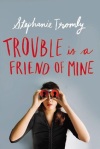
The Lost Apothecary by Sarah Penner
This was a book that I wasn’t even sure I wanted. It was an alternative to a Book of The Month Club pick. I didn’t like the description of the main pick for the month, but didn’t want to skip a month, so I reluctantly added this one. It sat on the shelf for awhile, and when I reached for what I thought was a different book, this one was there instead. Is that book serendipity? I think so.
This book was paced very well, and had such an air of mystery that I finished in one sitting. It was that good.
The story is written from the points of view of three different women:
Nella, the apothecary, begins the story in 1791 London. Although not old in years, her body is failing her and it’s her belief that it’s a form of punishment for what she has become. You see, Nella didn’t always set out to be a poisoner; it was at a very young age that she learned the skills of healing and helping women from her mother. She studiously watched and learned, and observed the great respect that was shown to her mother by the women that came to her for all types of remedies. But then Nella is left on her own, and in her grief meets someone who would shatter her world, which would lead her to a secret life that starts to break down not only her mind, but her body.
Eliza is also in Nella’s timeline. She is a young 12 year old girl who initially meets Nella at the behest of her employer, but then relies on Nella when she needs to rid herself of a ghost – real or imagined. Nella is drawn to Eliza, but fears that her young and innocent curiosity will lead her on a path as lonely and dangerous as her own. One night Eliza makes a horrible mistake, and it starts to bring everything crashing down on Nella. Eliza naively tries to make it right, and sacrifices everything.
Caroline’s point of view is present day. She is in London alone. Her personal life is falling apart, and she has no idea what’s next for her. She has a chance meeting with a gentleman who convinces her to join his group for “mudlarking” on the Thames. Not exactly sure what mudlarking is, and with nothing really planned, she joins the group. She’s about to give up searching through the muddy water of the Thames, when she finds a blue vial with an etching of a bear. And so begins her journey to find out where it came from, and leads her onto a search for a lost apothecary. But another mistake puts Caroline in jeopardy. Will anyone believe her? And will she finally make peace with her life and make the right decisions.
This book is simple in the storytelling, but so very compelling and satisfying that you empathize with each character. All too often when a book is written by various points of view, and one being of a killer, it’s hard to like all of the characters – and yes, I know some books are written so that you hate or despise a certain character, but this book makes you feel such sympathy for each one of these women that you only wish the best for them. I’ve been in such a reading slump lately, and this book that “accidentally” came to me got me right out of it – and it turned out to be such a sweet pleasant surprise.
Let’s chat about The Lost Apothecary – leave your comments below!
Interested in “mudlarking” on the Thames? Here is a great article:
Mudlarking in London on the Thames by Laura Porter
And this great website documents just some of the wonderful items found in the Thames
Here are a few mudlarking images —

















